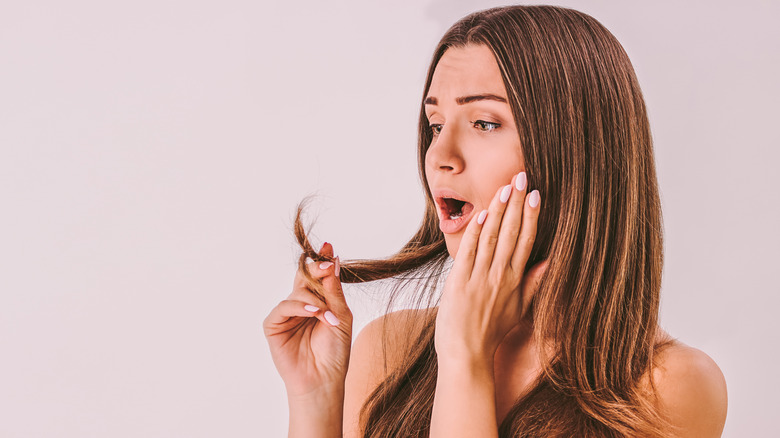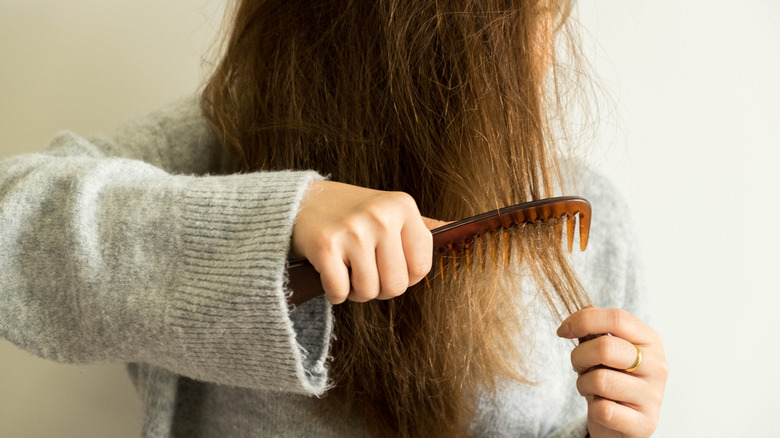The Real Reason Your Hair Breaks
Waking up in the morning only to notice new flyaways is the worst. Interestingly enough, many people can never recall watching their hair break off. Between washing, brushing, drying and styling, our strands can get pushed to their breaking point and fall out without us noticing. To help fortify your hair and protect from breakage, pinpointing the part of your routine that's the main culprit is incredibly important.
Mindbodygreen explains hair breakage as a cuticle issue. Apparently, the inner cuticle starts to break down and impact the scales that hold your tresses together. Andrew Fitzsimmons, a celebrity hairdresser, explains, "When the scales fall apart, the hairs become dry and separate from one another, which can result in split ends and shortened hair strands."
This can happen relatively easily but, if gone untreated, it can lead to full scale hair loss and breakage. The main cause of breakage comes from hair dryness since this can lead to inner cuticle damage. Without the nutrients and proteins it needs to protect itself, your hair shaft is left defenseless against daily wear and tear. Depending on your hair type, you may experience different types of dryness. While thinner hair can easily break with tangles, curly or textured hair gets drier more quickly. However, knowing the risks that present themselves can make all the difference in your mane's health.
There are two types of hair breakage
Another important aspect to keep on your radar is the type of breakage your hair is experiencing. Mindbodygreen explains that chemical and physical stress are the main culprits behind your shorter strands. Physical damage involves your hair styling and washing process; your mane can start to show signs of duress from the heavy washing, pulling, brushing and drying after a while. If you have color treated hair or hit the salon every few weeks, your tresses may be begging you for a break from the chemicals. "When the hair is overprocessed, past its breaking point, the hair's bonds can be easily damaged and become extremely dried out," Fitzsimmons adds.
If you think that styling and physical damage is to blame, start by checking the heat settings on your favorite tools, Allure suggests. Instead of frying your hair on the highest setting, take your time and keep it cooler — and never forget the heat protectant. If you suspect the culprit is chemical damage, you may be overdue for a haircut — a big haircut. The outlet notes that lobbing off the distressed parts can make way for healthy hair to grow back without the chemical processing this time.
Other common stressors include roughly towel drying — which can damage the cuticle — and sleeping on a cotton pillow case. Both types of fabric are too rough for the delicate nature of your hair follicles. Use an old t-shirt to dry your hair (trust us, this works) and switch to a satin or silk pillowcase. Odds are, you'll be halving the amount of processing you put your hair through.

